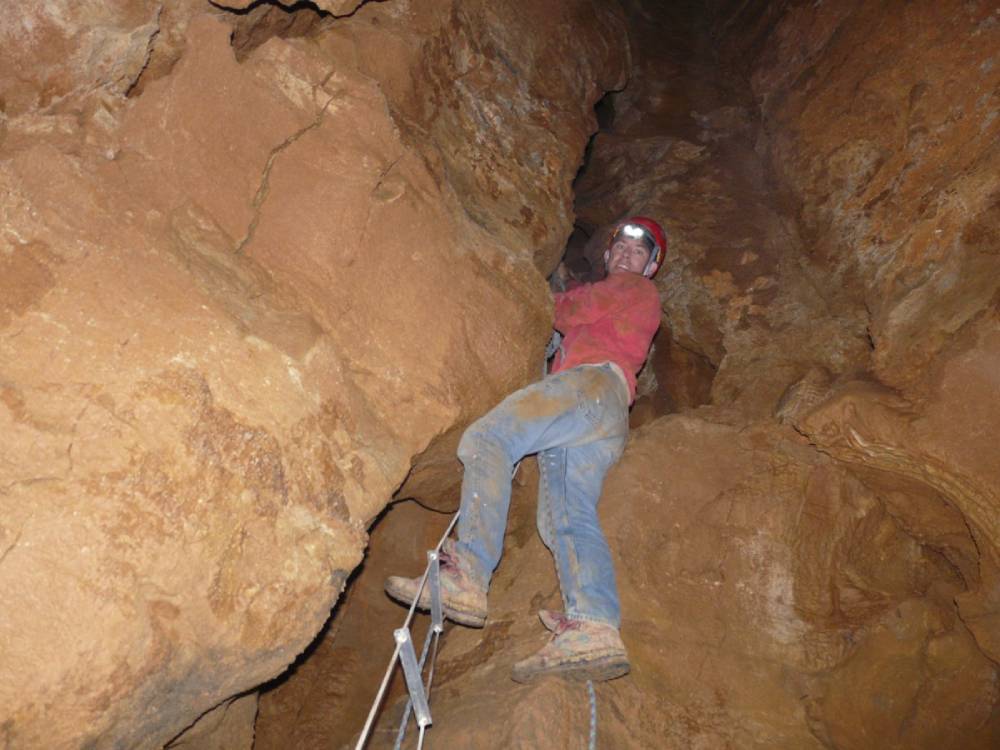Spelunking, or caving, is a thrilling experience that delves deeply into the earth’s undiscovered beauties. However, it has its share of difficulties, particularly when it comes to using caving ladders, just like an exciting experience. Knowing the proper caving ladder techniques is essential for both safety and enjoyment when using these ladders to navigate steep drops and difficult passages in caves.
When they hear about using cave ladders for the first time, a lot of people get overwhelmed or even intimidated. It’s normal to feel anxious, questioning whether you’ll be the one supporting everyone else or if you’ll be able to ascend or descend safely. But don’t worry, you can overcome these anxieties and relish every second of your caving adventure.
We’ll cover all you need to know about caving ladder techniques in this article. We can help you with everything from knowing how to use a rope ladder to figuring out the right angle for a safe climb. Let’s go ahead and convert those uncertainties into assurance!
The Basics of Caving Ladders
Understanding the Importance of Technique
Often when you’re caving, the ladder is your only way through the difficult vertical passages of the cave. It takes more than just physical strength to ensure efficiency and safety; it also requires the application of the proper techniques. The use of appropriate techniques can make the difference between an enjoyable and safe adventure and a stressful and possibly dangerous one.
Types of Caving Ladders
Rigid ladders and flexible rope ladders are the two main types of ladders used in caving. Although rigid ladders are more stable and convenient to climb, they are bulky and challenging to move. In contrast, rope ladders are more difficult to use effectively and are heavier. However, they are lightweight and portable. Every variety offers distinct benefits and is appropriate for various kinds of caverns and caving situations.
Step-by-Step Guide to Using a Caving Ladder
Step 1: Preparing for the Climb
Both physically and mentally preparing yourself is essential before you even set foot on a caving ladder. Make sure the ladder is correctly anchored and that your harness is fastened securely. Inhale deeply, concentrate on your breathing and picture yourself climbing or descending. The mental preparation necessary to win is half the fight.
Step 2: Climbing Up the Ladder
To keep your balance when climbing a rope ladder, keep your body close to the ladder. Instead of using just your arms, raise yourself by using your legs. This makes you feel less tired and increases your climbing efficiency. Always maintain two hands and one foot, or two feet and one hand, in contact with the ladder at all times. This is known as the “three points of contact” rule.
Step 3: Descending the Ladder
It can be more difficult to descend than to climb. Beginning with a slow descent, maintain your body close to the ladder. Step down with one foot, then the other, and finally your hands. To guarantee stability, keep three points of contact. Pause, inhale, and reposition yourself if you start to feel uneasy or lose your balance.
Step 4: Safety First
Always carry a backup plan, like a belay system, particularly in more difficult cave settings. Talk to your group and don’t hurry. The most important thing is safety, and you can avoid accidents by being patient.
Overcoming Common Challenges
Dealing with Fear and Anxiety
The first few times you use a caving ladder, it’s normal to feel a little uneasy. Anxiety can be increased by height, unfamiliar surroundings, and physical exertion. It’s important to proceed cautiously and slowly. Instead of glancing too far ahead or behind, concentrate on each step. Your confidence will increase with practice, and things that formerly seemed difficult will come naturally to you.
Managing Fatigue
Caving can be physically taxing, particularly if you’re not used to climbing ladders. Take breaks when required and pay attention to your body to avoid becoming fatigued. To maintain your strength, hydrate well and feed your body with snacks high in energy.
Navigating Tight Spaces
Because caves can be small and enclosed, climbing a ladder becomes even more difficult. It’s critical to remain composed and keep your breathing under control in these circumstances. Take your time and don’t hurry. Ask your team for assistance if necessary to get you through especially difficult situations.
Discover the thrill and challenge of Tight Caving.
People Usually Ask
How to use a rope ladder?
Make sure a rope ladder is firmly anchored before using it. Start by gripping the ladder’s sides and placing one foot on the bottom rung. To keep your balance, ascent gradually while keeping your body close to the ladder. Recall that while you hold onto the ladder with your hands, you should push yourself up using your legs.
How to ascend a ladder?
A ladder is best climbed by starting with your foot on the bottom rung and both hands gripping the ladder. Keep three points of contact at all times as you push up with your legs and pull with your arms. Take your time climbing to keep your balance.
What is the 3 to 1 ladder rule?
According to the 3 to 1 ladder rule, there should always be three points of contact on the ladder: two hands and one foot or two feet and one hand. This guarantees steadiness and lowers the possibility of slipping.
What is the 4 to 1 ladder rule?
The appropriate angle for erecting a ladder is determined by the 4 to 1 ladder rule. The base of the ladder should be one foot away from the wall or other structure for every four feet of ladder height. This angle keeps the ladder balanced and keeps it from toppling over.
What are the golden rules of ladder use?
Maintaining three points of contact, angling the ladder correctly, placing the ladder on a stable surface, and never reaching too far while on the ladder are the golden rules of ladder use. These guidelines are necessary for using ladders safely.

What is the ladder formula?
The ladder formula is a computation that establishes the proper separation between the wall and the ladder base. The formula is straightforward: the base of the ladder should be one foot from the wall for every four feet of ladder height (4:1 ratio).
What is the safest angle for a ladder?
The safest angle for a ladder is 75.5 degrees, which follows the 4:1 ratio rule. This angle ensures the ladder is stable and reduces the risk of it tipping over.
What is the biggest cause of ladder accidents?
The biggest cause of ladder accidents is improper use, such as setting up the ladder at the wrong angle, overreaching, or not maintaining three points of contact. Always follow safety guidelines to prevent accidents.
How to calculate the ladder angle?
To calculate the ladder angle, divide the height of the ladder by four. The base of the ladder should be this distance away from the wall. For example, if the ladder is 16 feet high, the base should be four feet from the wall.
What is the correct way to climb a ladder?
The correct way to climb a ladder is to maintain three points of contact, climb slowly and steadily, and keep your body centered between the ladder’s side rails. Avoid rushing and never overreach.
What is the proper way to position a ladder?
Position a ladder by ensuring it’s on a stable, level surface and at the correct angle (4:1 ratio). The top of the ladder should be firmly against the surface you’re climbing.
What is the correct way to erect a ladder?
To erect a ladder, first ensure the ground is stable and level. Then, lean the ladder against the structure at the correct angle. Secure the top of the ladder, and ensure it won’t slip or move while in use.
What is the maximum ladder angle?
The maximum ladder angle recommended for safety is 75.5 degrees. This follows the 4:1 ratio, where for every four feet of height, the ladder’s base should be one foot away from the wall.
Conclusion
Mastering caving ladder techniques is essential for a safe and enjoyable spelunking adventure. By understanding the basics, preparing thoroughly, and following the right steps, you can overcome any challenges that come your way. Remember, caving is as much about mental strength as it is about physical ability. So, take your time, trust in your training, and enjoy the incredible journey into the earth’s depths.
Read about mastering the Single Rope Technique for caving.
